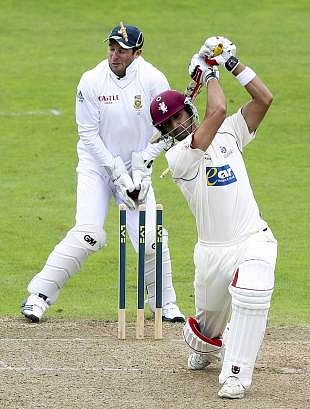
Vouching for Boucher
There is a sense of drama in Mark Boucher’s retirement – going down behind the stumps and away from the game in his beloved Proteas’ cap like a soldier goes down in war. Even before the unfortunate googly from Imran Tahir, many people would have questioned his tactic of not using a helmet in the modern era. But, as the puritans rightly feel, the helmet is a substitute for lack of talent and Boucher was fiercely traditional in his art – as Cricinfo puts it, “a man to go to war with, but not against”.

On his first tour of England in 1998, Stephen Brenkley of The Independent had earmarked Boucher as the first ‘keeper to touch 400 dismissals in Test matches assuming Healy did not extend his game. The Australian fans sniggered at this statement – a year later, Healy ended an albeit glorious career at 366 and Boucher would go on to do one better by becoming the first wicketkeeper to record not just 400 but 500 victims in Test match cricket.
This was far from what even the South African junta would have predicted in 1997 when a 20 year old kid became South Africa’s second Test keeper after isolation replacing Dave Richardson behind the stumps. Richardson was already a legend and Boucher was some distance from being the first choice – he was a “manufactured” keeper, a batsman who could keep. In effect, that was the real reason why he made it to the team in the first place – to add some meat to the batting in face of the likes of Wasim Akram. Two years would pass before Gilchrist would make his Test debut and underline the importance of a batsman-keeper in modern day cricket.
But that would not deter Boucher from becoming what he was destined to be. After a steady start, Boucher ran into heavy weather in his first outing in England at Edgbaston. The ball swung and Boucher could hardly make any contact with it. Critics started sharpening their knives. When Boucher was questioned, he remarked with cheerful alacrity, “Even The Rod Marsh was Iron Gloves at one point of time.”
Surely enough, the tide turned and soon the man from the Eastern Cape was flying around like Superman behind the stumps and in front of the slips catching balls before they dropped to the ground. En route to his 500 dismissals, he became the fastest wicketkeeper to 50 victims beating his predecessor and the West Indian Courtney Browne to the top spot and was a shoo-in ahead of the likes of Kumar Sangakkara when the World XI squad was announced to tour Australia in 2005.
In good measure to his keeping skills, he added five Test centuries and one of the fastest ODI tons to his kitty. 5000 runs at over 30 in five day cricket is no mean feat for a lower order batsman but then Boucher was always a scrapper – looking to improve with each outing.
Like his predecessor Richardson, Boucher too had to face the ignominy of two heart breaking exits from the World Cup – in 1999, when he watched Allan Donald commit hara-kiri from the dressing room and in 2003, he was in the centre of it all when Duckworth and Lewis toyed with South Africa’s chances to progress further in the showpiece event. This was more painful than a bail in the eyeball for the man – he hated losing and he hated the choker tag. It was his dream to see South Africa to the top of the Test rankings and just when South Africa were about to reach there he had the most unfortunate of exits.
Before his retirement, Boucher was the last of an era of which only Shivnarine Chanderpaul and Sachin Tendulkar remain. As in the case of Rahul Dravid, when men who have served their country and the game for so long have to leave, what remains is sadness and reflection. But, as Boucher himself would say, the game moves on and South Africa will have to start looking for someone to continue the legacy of Boucher the Poucher.